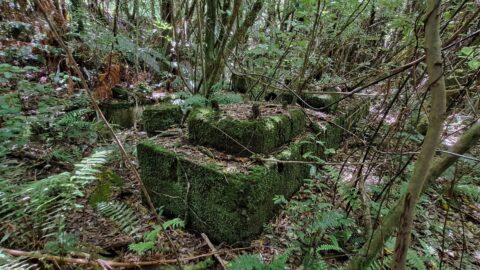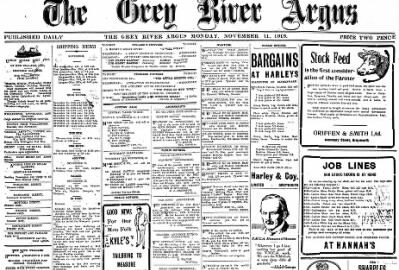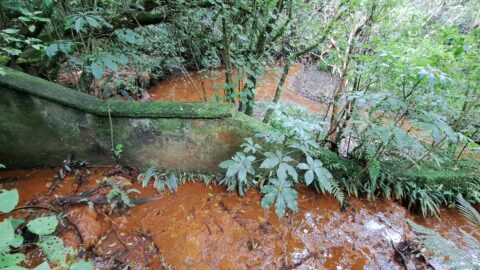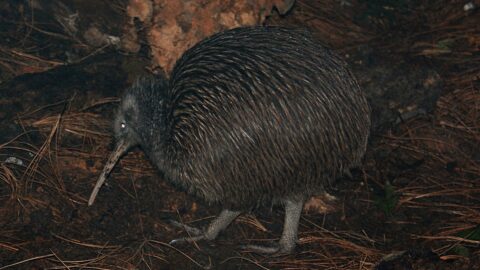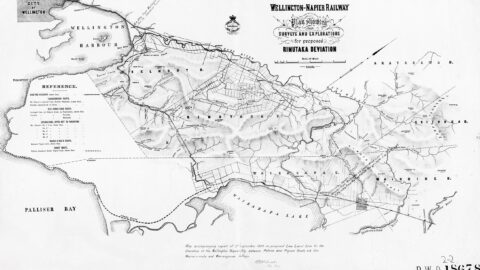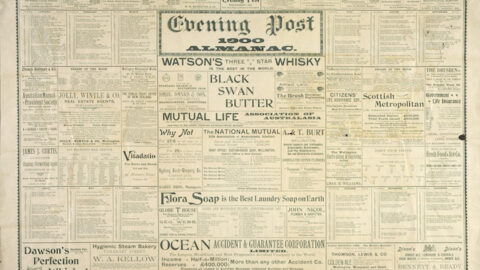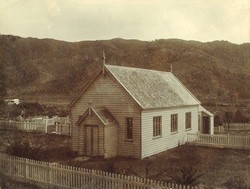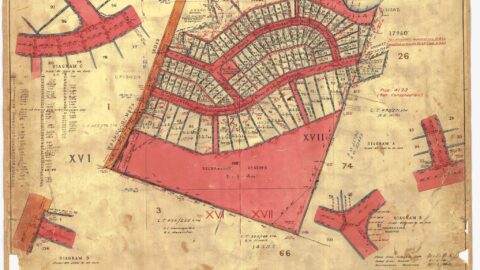The following is Mr O’Neill’s report:
Engineer’s Office, Wellington, 15th Feb., 1868
Sir, — I have to report that since the date of my last report (January 31st), I have explored the country from the Wainui-o-mata Valley to Lake Wairarapa. The track taken by me is shown by a red line on the accompanying sketch map which I have prepared, and on which are marked heights and distances at various points. I changed from the Wainuiomata to Featherston.
Mr Sinclair, one of the oldest settlers in the province, kindly volunteered to pioneer the way. I therefore, accompanied by him and a party of men, left his house at Wainuiomata on Thursday, the 6th inst., and arrived at Mr Barling’s at Lake Wairarapa on Sunday afternoon, the 9th instant, where the party were hospitably received. On Monday we measured the distance from Burling’s to Featherston.
On leaving Sinclair’s, we followed a track up the valley to the Wainuiomata for six miles to the point marked A on plan. We then turned to the right and ascended the range, keeping on a leading spur, and got on the main ridge, which is about 1,900 feet above the sea; followed the main ridge and struck off to the Orongorongo. We followed a sidling eastward to the saddle at the source of the Orongorongo. This saddle is 1,850 feet above the sea.
Close to this point on Friday night we camped, and the rain fell in torrents the whole night. On Saturday morning it was still wet, and the bush loaded with water. We proceeded in a north-easterly direction generally, keeping the ridge as much as possible, until we pitched camp on the side of the range along the Wairongamai River, at an elevation of 2,500 feet.
On Sunday morning we proceeded to the saddle which divides the Wairongamai from the Pakuratahi. The elevation of the saddle, marked B on plan, is about 2,200 feet. We then ascended the hill to the north of saddle B, at a point 2,500 feet high—from which there was a splendid and extensive view of the country all around, including Wellington city. From this point (Mount Sinclair) we descended to the Pickeru Creek and thence to Burling’s. On the following day we proceeded to Featherston.
The distance from point A at the Wainuiomata to saddle B is five and a half miles, and from saddle B to Burling’s, two and five-eighths miles. From Burling’s to Featherston, eleven and seven-eighths miles. The distance by road from Wellington to Sinclair’s is sixteen miles, making the whole distance by the route from Wellington to Featherston forty-two miles.
The altitudes given are the result of a single set of observations with the aneroid barometer, and are only to be taken as an approximation. During the time I was exploring this route, I saw Mr Gale, C.E., engaged taking sections of the Lowry Bay range, near the present road, for the purpose of tunnelling, if necessary.
By reference to the accompanying section, a tunnel is shown thirty chains long, but the gradient is too steep. Mr Gale informed me that to have a better gradient, a much larger tunnel would be required and some heavy cuttings would be necessary—hence, to get through this central range, the line would be costly.
From Sinclair’s, a line of railway could be easily formed up the Wainuiomata Valley, but the ascent is steep from the creek to the first ridge; from that point the work would be comparatively easy to saddle B, which stands at such an elevation that it would be difficult to continue a line down to the lake. I could not see or hear of any easy opening along the lake that would lead to the saddle; still, Mr Sinclair informs me that a good gradient might be got by following round some of the intervening hills between the saddle and the lake at about six miles northwards.
The timber along the route is composed of rimu, rata, white pine, birch, hinau, and totara. The totaras are small, and are found chiefly on the tops of the ranges.
I understand that most of the large tract of country between the Wainuiomata and Lake Wairarapa is still “unsold land.” I have pleasure in expressing my obligation to Mr Sinclair for the able assistance he afforded me.
— I have, &c.,
Charles O’Neill.
Tags: Newspaper Railway Sinclair
